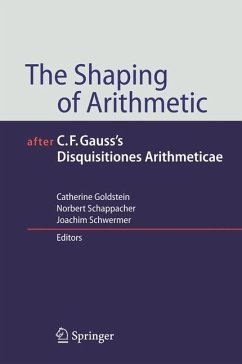
Beyond the Quartic Equation
Versandkostenfrei!
Versandfertig in 1-2 Wochen
84,99 €
inkl. MwSt.

PAYBACK Punkte
42 °P sammeln!
One of the landmarks in the history of mathematics is the proof of the nonex- tence of algorithms based solely on radicals and elementary arithmetic operations (addition, subtraction, multiplication, and division) for solutions of general al- braic equations of degrees higher than four. This proof by the French mathema- cian Evariste Galois in the early nineteenth century used the then novel concept of the permutation symmetry of the roots of algebraic equations and led to the invention of group theory, an area of mathematics now nearly two centuries old that has had extensive applications in ...
One of the landmarks in the history of mathematics is the proof of the nonex- tence of algorithms based solely on radicals and elementary arithmetic operations (addition, subtraction, multiplication, and division) for solutions of general al- braic equations of degrees higher than four. This proof by the French mathema- cian Evariste Galois in the early nineteenth century used the then novel concept of the permutation symmetry of the roots of algebraic equations and led to the invention of group theory, an area of mathematics now nearly two centuries old that has had extensive applications in the physical sciences in recent decades. The radical-based algorithms for solutions of general algebraic equations of degrees 2 (quadratic equations), 3 (cubic equations), and 4 (quartic equations) have been well-known for a number of centuries. The quadratic equation algorithm uses a single square root, the cubic equation algorithm uses a square root inside a cube root, and the quartic equation algorithm combines the cubic and quadratic equation algorithms with no new features. The details of the formulas for these equations of degree d(d = 2,3,4) relate to the properties of the corresponding symmetric groups Sd which are isomorphic to the symmetries of the equilateral triangle for d = 3 and the regular tetrahedron for d - 4.













